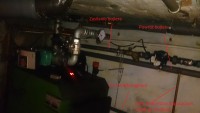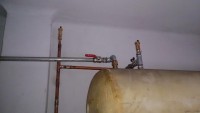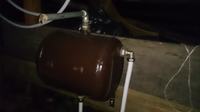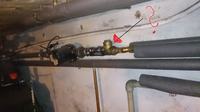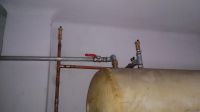Waldemar z Kaszub wrote: The very process of venting such a system is lengthy. I changed the boiler in August and there is air in the system until today. I do not care at all because many years of experience with previous exchanges shows that it will eventually die down. The fact that I use boilers with coils and it may be easier to vent here. But for you this advice:
Place a spirit level on the top of the boiler and check how it is fitted. If the side with vents is lower than the opposite, the airbag will still "hide" there.
The last changes to the system were made sometime at the beginning of this year, probably February. The problem continued before and after today. From what I read, a properly made open installation should vent itself through the expansion vessel, and in my case, the air that detaches from the boiler goes straight to the boiler and, what is most puzzling, bypasses 2 automatic vents on the way.
As you can see in the first post, the first vent is mounted almost to the ceiling, and the second one is just above the power inlet to the mantle. I also checked with a spirit level and the boiler is installed correctly, by the way, I checked that they had not mistaken the power supply and installed it backwards, but everything is fine.
Added after 31 [minutes]: Ptak3124 wrote: Looks like a flap check valve ...
Throw the check valve over the pipe section above the hot water heater between the two vents.
There is always a bubble of air or gas coming out of the boiler's power supply. The overflow vessel is probably not connected properly and there is air in the section from the boiler to the domestic hot water pump. Non-return valve on off the pump is closed and here is the problem, because the way to the vent above the hot utility water is cut off. When the pump starts, you can hear the "buzzing" of water and air. The non-return valve opens. Some of the air will escape through the vent, but the rest of the small bubbles will go with the water to the DHW. And hence the "gurgling" in the hot water tank. In extreme cases, the pump may become air-bled and then it runs dry ... I do not have to describe the effects anymore.
Forget the fact that alupex is connected to the overflow vessel ... To be modernized as soon as possible.
You can write why the overflow vessel is badly connected and why alupex should not be used here?



